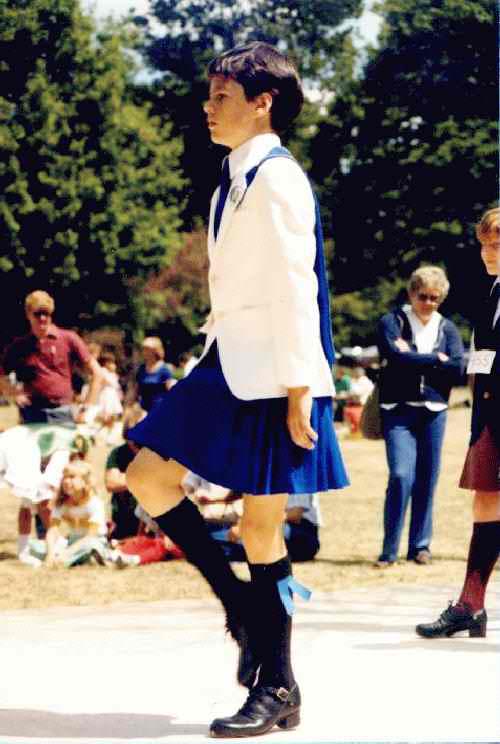
Irish and Tap Dancing

Figure 1.--The Irish influence is obvious in that most American of all dances, tap dancing. Fancy footwork is a central chracterictic of both tap and step dancing. It is notable that "Riverdance" includes a challenge between Irish and black dancers. That was no invention. It was an actual part of the dance heitage of America. .
|
The Irish influence is obvious in that most American of all dances, tap dancing. Fancy footwork is a central chracterictic of both tap and step dancing. It is notable that "Riverdance" includes a challenge between Irish and black dancers. That was no invention. It was an actual part of the dance heitage of America. There are strong links between Irish step dancing and tap. Modern tap dancing enjoys a rich heritage brought to America by the wave of European immigration in the 19th century. The most important was Irish step dancing, perhaps because the Irish arrived in such karge numbers. Others such as Scots Highland dancers and English clogers also played a role. The other major contribution was made by African slaves in the American South. Black dancers by the late 1830s equipped with European percussive rhythm were performing step dances on stage. One of the most renowned was William Henry Lane ("Juba"). Irish and Lancashire step dances performing on hard wooden clogs were also becoming popular. These two forms of step dancing evolved into modern tap dancing and clog dancing. By the end of the 19th century, clog dancing had declined in popularity, but continues today as a folk dance. The earliest references to tap dancing as a destintive type of dance involves "challenges" and "stealing steps." Noted tap dancer and historain Jane Goldberg explains that modern tap danmcing evolved from the "lower classes, developed in competitive 'battles' on street corners by Irish immigrants and African American slaves." [ITA Newsletter] Famed Irish step dancer Jack Diamond challenged Lane to a series of famed challenges in Boston and New York. To this day there is no agreement has to who was the victor. Tap dancing thus emerged as a uniquely American dance form in the vaudeville stage of the late 19th and early 20th century and then the spectacular choreography of great American musical review.
Christopher Wagner

Navigate the Historic Boys' Clothing Web Site:
[Introduction]
[Activities]
[Biographies]
[Chronology]
[Clothing styles]
[Countries]
[Bibliographies]
[Contributions]
[FAQs]
[Glossaries]
[Satellite sites]
[Tools]
[Boys' Clothing Home]
Navigate the Historic Boys' Clothing Web chronological pages:
[The 1880s]
[The 1890s]
[The 1900s]
[The 1910s]
[The 1920s]
[The 1930s]
[The 1940s]
[The 1950s]
[The 1960s]
[The 1970s]
[The 1980s]
[The 1990s]
Navigate the Historic Boys' Clothing Web dance pages:
[Return to the Main Irish other dance page]
[Return to the Main Tap page]
[Ballet]
[Irish step]
[Highland]
[Ballroom]
[Native American]
Navigate the Boys' Historical Clothing kilt pages:
[Main kilt page]
[Kilt suits]
[Scottish kilts]
[Scottish boys clothing]
[Scottish school uniform]
[Highland dance]
[Irish kilts]
[Irish boys clothing]
[Irish step dancing]
[Greek kilts]
Created: Augustv16, 2002
Last updated: August 16, 2002



